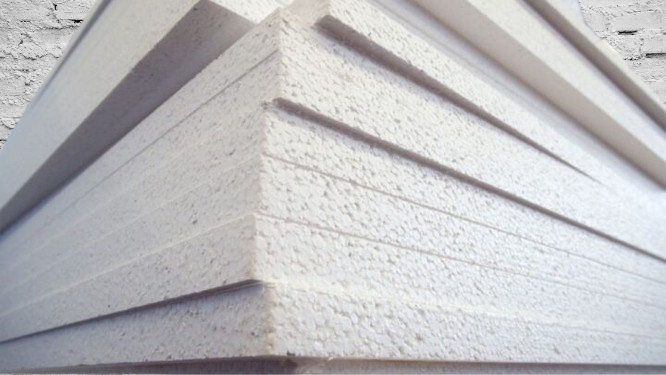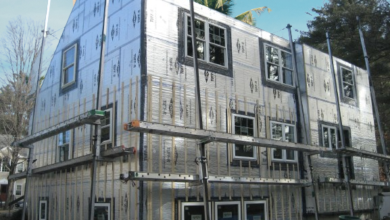Foam Board Over OSB Sheathing

Although foam board is used for a variety of purposes, its primary use in construction is to improve insulation. Insulation should be a top priority when building walls if you live in a region that gets extremely cold temperatures.
Foam board and OSB are essential components for home insulation. And today, I’ll be answering the question of whether foam board can be used instead of OSB sheathing and providing helpful advice to anyone who wants to begin this project.
Is Foam Board Adequate for Over OSB Sheathing?
Although OSB sheathing provides weather resistance in a building, adding an insulating foam board can enhance its benefits.
This is a custom that both professional builders and do-it-yourselfers find appealing. I can thus confirm that it is acceptable if you are interested in installing a foam board over OSB sheathing.
To make sure your project is successful, you might want to read through some of the advice provided below before moving further.
How to Install Foam Board Over OSB Sheathing: Some Advice
Covering OSB sheathing with foam board is not problematic. But before you do anything, you should determine how thick you want your foam board to be.
A thicker foam board, ideally two inches thick, will provide superior insulation. But the wall’s size will grow as a result. Thus, you will need to adjust the window and door jambs.
Second, you shouldn’t put siding right next to OSB sheathing after foam board has been installed over it. To prevent moisture issues, it is advisable to allow some space.
As you may already be aware, particularly on windy days, some rainwater typically finds its way into the siding. Another way to avoid this is to cover the foam board with a house wrap, like Tyvek. You can be certain that your OSB and foam board are dry by doing this.
You should also keep in mind that OSB sheathing that has been harmed by moisture should not be covered with foam board. This will almost certainly end badly.
Make sure the OSB and stud cavities are free of moisture damage before beginning this project. Additionally, see if there are any water leaks in your siding. Replace it first if you find any moisture issues, and then cover OSB with foam board.
How Would The Foam Board Be Affected By The OSB’s Growth And Contractions?
Foam board expansion and contraction will be impacted by OSB. Foam boards, as we all know, perform poorly in high-stress environments. Consequently, harm may result from this.
But you also need to consider why the OSB would grow or shrink. That will most likely happen as a result of being exposed to moisture, which is why I told you earlier to check for leaks and moisture issues.
Additionally, there won’t be a point of entry for moisture because Tyvek is wrapped around the foam board. As a result, your OSB won’t need to grow or shrink.
Is OSB Able To Provide Foam Board With Structural Support?
This is yet another typical justification for choosing foam board sheathing over OSB sheathing. While foam board can help improve insulation on its own, it is not a stand-alone solution. OSB sheathing fills that need.
The foam board will have structural support from the OSB at the back. Your foam board will therefore give you insulation for as long as possible.
If you are concerned that the OSB sheathing behind the foam board won’t provide enough support when it is glued to the studs, you can strengthen the structural support.
Is It Possible to Place Spray Foam Between OSB Sheathing and Foam Board?
You might be tempted to add spray foam in between OSB sheathing and foam board if you’re serious about increasing the insulation in your house.
Spray foam is a simple, affordable, and do-it-yourself method of improving the insulation in your home. Will it, however, be successful?
It is highly recommended that you refrain from placing spray foam in between the OSB and the foam board. It is sufficient to ensure that the temperatures inside and outside do not affect one another by using OSB sheathing and foam board.
As spray foam dries, it becomes warmer. Conversely, the melting point of a rigid foam board is low. The heat from the spray foam may cause the foam board to melt or catch fire when it’s placed between OSB and foam board. As such, there is a significant risk involved.
Is it feasible to cover foam board with OSB sheathing?
Foam board is typically placed over OSB sheathing; however, the opposite cannot be said.
For whatever reason you might be interested in covering the foam board with OSB sheathing, you should be aware that this is not appropriate. Furthermore, no building inspector in the world would approve of such a setup. Here are a few explanations for this.
How are you going to secure the OSB sheathing firmly into the studs with foam board sandwiched between them? You can disregard the shear strength of your walls when OSB is placed on top of foam board.
Adding foam board on top of OSB does more than just build a wall with good structural integrity. Additionally, you produce a heat break.
Is There A Better Option Than To Use Foam Board Instead of OSB Sheathing?
Installing foam board over OSB sheathing is acceptable, but it needs to be planned carefully. As a result, you might be interested in looking into other options for obtaining insulation and OSB structural support.
R-Zip OSB is a product made by Huberwood. This prefabricated, one-sided OSB panel illustrates the potential results of covering OSB sheathing with foam board.
On the same board, Zip-R OSB provides insulation and a surface that can be nailed to the studs. Installing foam boards over OSB sheathing would have required time and labor, which this product eliminates.
Furthermore, it provides a total thermal break. If you wish to install a foam board over OSB sheathing, the R-Zip OSB is something to think about because it makes the process easier.
Water Vapor Condensing Between Foam Board And OSB: Should I Be Concerned?
Moisture should always be your concern when it comes to wood. However, a lot depends on the kind of weather in your area.
For water vapor to condense between the OSB and foam board, it needs to be frequently exposed to temperature fluctuations. Since most places only have seasons that last a few months, very few places experience such weather.
As a result, you shouldn’t be unduly concerned about condensation of water vapor between OSB and foam board. If you can’t let this go, you can make sure that there is an airtight gap between the OSB sheathing and the foam board when insulating your house.
With that, a powerful adhesive can assist you. There won’t be as much space for moisture to sit and condense between these walls as there is.
It is also possible to make sure that there is no water vapor between these two materials by placing Tyvek on the foam board after it has been installed over OSB.
Unlike other house wraps, Tyvek allows for airflow. That is to say, Tyvek not only prevents water from entering your home but also lets trapped moisture escape your walls.

